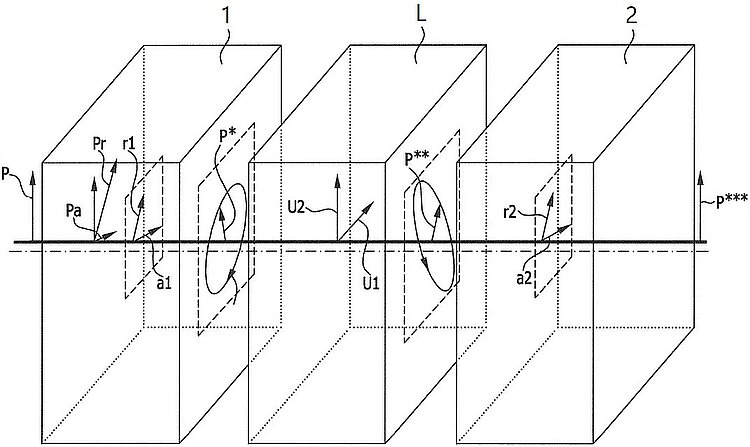Fully optical depolarization compensation in symmetrically cooled disk laser systems
Abstract
Thanks to a clever design of the laser disk itself, the depolarization caused by the two heat spreaders can be neutralized. This creates a very efficient cooling system for disk laser systems.
Background
Disk lasers can now be cooled very efficiently by using a symmetrical design of the heat spreaders.
Problem
However, there are hurdles that must be overcome in design and operation. Such is the depolarization in the diamond heat spreader in the range of 0.3 to 0.7% - a decisive factor in terms of performance and flexibility with regard to usable laser media (such as titanium-sapphire lasers). Depolarization is caused by both thermal and mechanical stress that inevitably occurs when the heat spreaders are applied on both sides.
Solution
Due to the stress that occurs, the two naturally isotropic diamonds (primary heat spreaders) become birefringent. In combination with the inherently birefringent laser disk, depolarization therefore occurs after a complete beam roundtrip. The most efficient way to compensate for this effect is to use the optical elements already present, in this case the laser disk itself. For this purpose it is designed as a lambda/2 retarder of a certain thickness. The passing radiation is thus delayed by half its wavelength; the main axes of refraction are parallel or perpendicular to the linearly polarized beam, which thus passes the disk in an unchanged polarization state, but with reversed signs. When the beam passes the lamda/2 retarder a second time, polarization is rotated again. After both passes through the three elements, depolarization has nearly been fully compensated.
The prerequisite for this method is a precise manufacture of the three elements; first functional samples have been successfully manufactured and tested.
Advantages
- Efficiency increase of symmetrically cooled disk lasers
- Use of already existing optical components (targeted use of properties of existing elements)
- Depolarization compensation > 90 percent
Application
Considerable progress has been made in expanding the range of usable laser active materials for compact disk laser systems by implementing symmetrical cooling. Now additional depolarization compensation ensures that losses due to refraction effects in the diamond heat spreaders are avoided.

